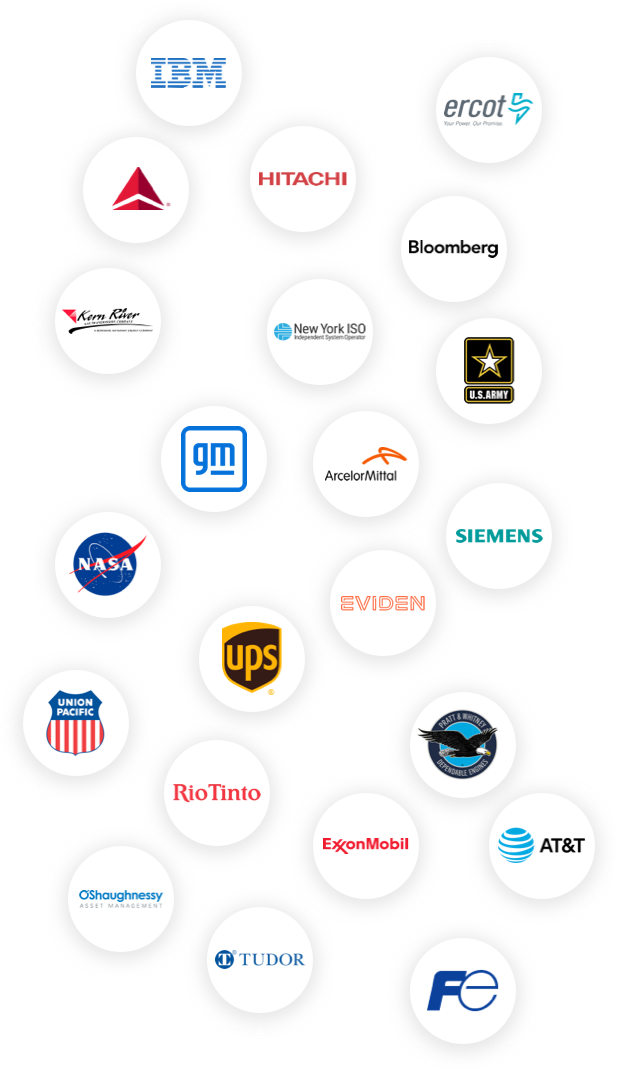Maximize profits with rapid, precise optimization—streamline supply chains, cut costs, and enhance agility through advanced AMPL algorithms.

AMPL simplifies supply chain optimization for modelers, data scientists, and developers, offering powerful tools to efficiently solve complex problems and streamline operations.
Gain computational efficiency with rapid prototyping, enabling swift supply chain model iterations. Experience precise solution evaluations and enhanced scenario testing, driving optimal decision-making for complex supply chain challenges.
Enhance your supply chain models with the flexibility to choose from multiple optimization solvers, ensuring computational efficiency and tailored solutions for varying problem complexities and performance requirements.
Efficiently tackle massive datasets with our tool’s advanced capability to solve large-scale supply chain optimization problems, ensuring precise and rapid computations for complex scenarios. Perfect for demanding technical environments.
Achieve precise stock level management and demand forecasting in retail with AMPL's linear programming and mixed-integer techniques. Optimize cost efficiency and inventory accuracy, providing a quantifiable reduction in excess stock and improved supply chain responsiveness for data-driven decisions.
AMPL offers precise constraint programming and network flow models tailored for manufacturing, ensuring efficient resource allocation. It enhances production scheduling, minimizing lead times and maximizing throughput. Achieve optimal supply chain designs with quantifiable gains in operational efficiency and resource utilization.
AMPL's optimization tools enable precise route planning and fleet management by utilizing VRP frameworks. This results in a 70% reduction in transportation costs and a 50% improvement in delivery times, ensuring optimal resource allocation and enhanced operational efficiency.
Maximize grid reliability and resource distribution through stochastic optimization and scenario analysis. AMPL enhances computational precision, enabling data scientists to fine-tune energy grid operations and effectively balance supply and demand, ensuring performance consistency across variable conditions.
AMPL works with top companies across over 40 industries to create customized tools for their most complex tasks.

Access a complete optimization application building platform with custom pricing and dozens of integrations for an uninterrupted workflow.
Get in touch to book a time for us to talk about your specific needs, and demo real solutions.
Explore how industry-leading companies use AMPL to optimize complex problems.
Optimizing your supply chain can significantly reduce costs and boost profits. By streamlining operations, you can lower transportation expenses, minimize storage costs, and reduce waste from expired or excess inventory.
Optimization tackles various challenges like pinpointing the ideal locations for production and distribution centers, creating efficient transportation routes, and optimizing inventory levels to meet demand without excess. It also helps in effectively allocating production across different facilities and planning for disruptions.
Numerous companies have transformed their supply chains through optimization. For instance, a global consumer goods company streamlined its production planning, reducing costs by 15%. A leading retailer optimized its distribution network, leading to a 5% reduction in transportation costs and faster delivery times.
AMPL’s algebraic modeling language provides a powerful and intuitive way to express complex optimization problems. Its flexibility allows you to adapt your models as your supply chain evolves, accommodating new products, changing demands, and evolving business requirements.
Effective models require data on your supply chain network, including the locations of suppliers, production facilities, warehouses, and customers. You’ll also need data on transportation costs, production capacity, demand forecasts, and inventory levels.
AMPL solutions can be seamlessly integrated with your existing systems through APIs or custom-built interfaces. This ensures data consistency and allows you to leverage optimization insights within your existing workflows.
Yes, AMPL allows you to incorporate uncertainty and variability into your models using techniques like stochastic optimization and robust optimization. This helps you create solutions that are resilient to disruptions and unforeseen events.
AMPL is designed to handle large-scale problems efficiently. It leverages powerful solvers like CPLEX and Gurobi, which use advanced algorithms to find optimal or near-optimal solutions within reasonable timeframes.
Key KPIs include reductions in transportation costs, inventory holding costs, and overall supply chain costs. Other important metrics include improvements in on-time delivery rates, order fulfillment rates, and customer satisfaction scores.
While familiarity with optimization concepts and AMPL’s modeling language is beneficial, we offer comprehensive training and support to equip your team with the necessary skills. We also provide ongoing maintenance and support to ensure the long-term success of your solutions.
The implementation timeline depends on the complexity of your supply chain and the scope of the project. However, we follow a structured implementation process to ensure timely delivery and minimize disruption to your operations.
Ongoing costs typically include software licensing fees, support and maintenance agreements, and potential costs for model updates or enhancements. We work closely with you to understand your budget constraints and provide cost-effective solutions.